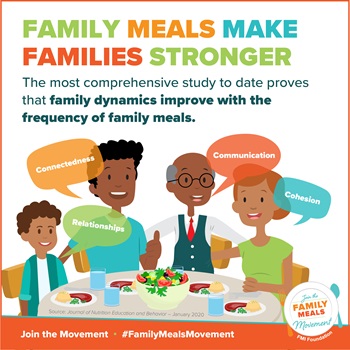By: David Fikes, Executive Director, FMI Foundation 
The message is consistent; the last month has been tough. That anecdotal assessment gets confirmed daily by what I hear from friends and relatives through phone conversations, Facebook connections and neighbors shouting at me 10 feet away. It also gets objectively confirmed by FMI’s special COVID-19 U.S. Grocery Shopper Trends data which reports 88% of Americans saying their lives have been disrupted by the pandemic, with answers gauging the intensity of that disruption spread evenly over the range from somewhat to extremely.
In a matter of days, we’ve all had change upon change foisted upon us. The sum of these add up to a near total annihilation of our established social patterns, reconfiguring all the wheres, hows and with whoms of our lives. Compounding the problem, those of us already prone to health and disease anxieties have had those worries amplified by all sorts of additional challenges; needing to quickly get more tech proficient to function in a makeshift working-remotely setting, navigating new modes of food procurement and last, but certainly not least, trying to supervise the classroom in the room next door while participating in yet another conference call.
In the midst of all these worrisome considerations, the word “home” has become central. For the sake of our health and the safety of all, we’ve been told to stay at home, school our kids at home, work from home and eat at home. With everything focused on the home front, the family meal—whether that be with immediate family members, roommates, your favorite pet or virtual dinning with loved ones—has moved from being an occasional occurrence to a three-times a day adventure.
Helping families of all shapes and sizes share meals together both in home and virtually is a foundational purpose the various parts of the food industry open their respective doors for business each day – even in these coronavirus stressful days. New information published in the Journal of Nutrition Education and Behavior features a systematic review of 43 articles on family meals and substantiates the food industry’s belief in the significant value of the family meal. This meta-analysis sponsored by the FMI Foundation shows how:
- Family meals are a valuable contributor of improved nutrition and family functioning – which is defined as family connectedness, communication, expressiveness, and problem-solving.
- More frequent family meals support both emotional and physical well-being because they create better dietary outcomes and improve a family’s ability to address issues, support one another, and explore new possibilities.
- Family meals improve fruit and vegetable consumption – overwhelmingly, studies showed a positive relationship between family meal frequency and fruit and vegetable intake when examined separately, but also when fruit and vegetable intake were combined.
We are living at a time when anxieties are running high and when being healthy is a paramount issue on everyone’s minds. So, has there ever been a better time for us to maximize the health and connection-building value of the family meal? We need the support of family to remain positive and productive during these high-anxiety days and we all know we need to be doing all we can to keep our bodies healthy.
Even though the family meal has been intensely foisted upon us by an undesirable set of circumstances and we may have to get creative in how we make these family meals happen—taking advantage of virtual connectivity—we have also been given the opportunity to experience the health and family functioning boost provided by the family meal. It gives us all a chance to join the Family Meals Movement.


 Industry Topics address your specific area of expertise with resources, reports, events and more.
Industry Topics address your specific area of expertise with resources, reports, events and more.
 Our Research covers consumer behavior and retail operation benchmarks so you can make informed business decisions.
Our Research covers consumer behavior and retail operation benchmarks so you can make informed business decisions.
 Events and Education including online and in-person help you advance your food retail career.
Events and Education including online and in-person help you advance your food retail career.
 Food Safety training, resources and guidance that help you create a company food safety culture.
Food Safety training, resources and guidance that help you create a company food safety culture.
 Government Affairs work — federal and state — on the latest food industry policy, regulatory and legislative issues.
Government Affairs work — federal and state — on the latest food industry policy, regulatory and legislative issues.
 Get Involved. From industry awards to newsletters and committees, these resources help you take advantage of your membership.
Get Involved. From industry awards to newsletters and committees, these resources help you take advantage of your membership.
 Best practices, guidance documents, infographics, signage and more for the food industry on the COVID-19 pandemic.
Best practices, guidance documents, infographics, signage and more for the food industry on the COVID-19 pandemic.
